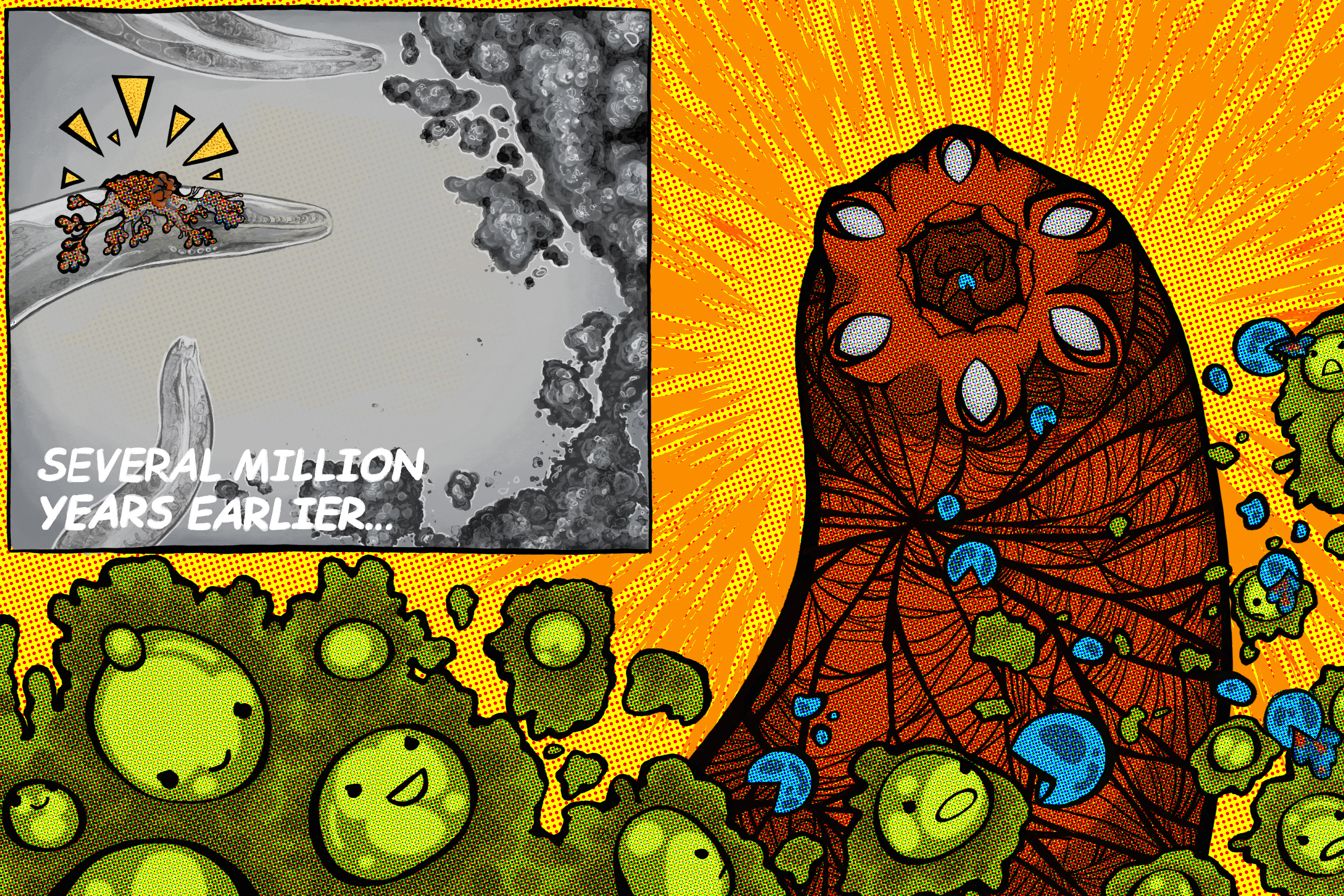Nematode Evolution

Horizontal gene transfer in Pristionchus. Cover Story in Molecular Biology & Evolution (May 2022). Artwork by Dephine Welter
Nematodes are the most abundant animals on earth and exist in almost all territories. They have adapted to different conditions and evolved into diverse life styles. Most of nematodes are free-living, feeding on microbes such as bacteria (the best known nematode C. elegans) and fungi. However, a small group of nematodes have become parasites to other organisms which are a burden to human health and global food security.
Our lab is interested in the molecular evolution of nematodes with two main focues: 1) the evolution of parasitism of the most important plant-parasitic nematodes including cyst, root-knot, and lesion nematodes; 2) horizontal gene transfer in the free-living nematodes Pristionchus species and its ecological meaning. We are using an integrated approach including genomics, genetics, biochemistry etc. to explore the molecular evolution of these nematodes. Please check out the recent publications to know more about our research.